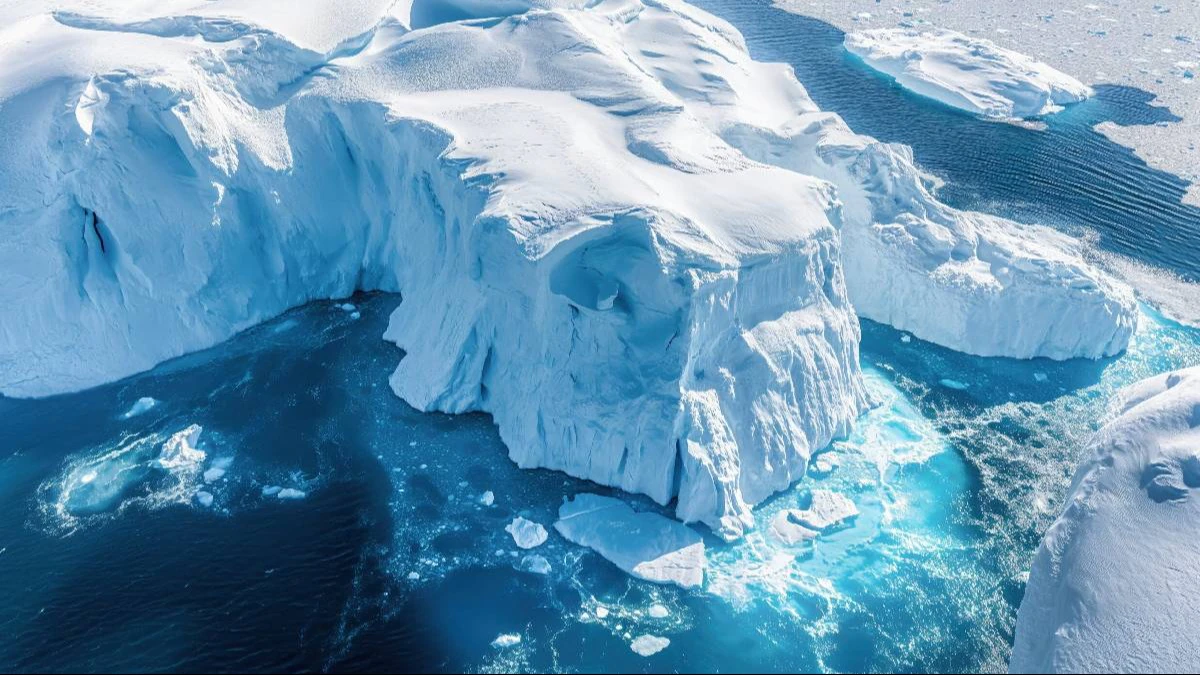Disturbing news emerges from Antarctica as scientists have found evidence of “vigorous melting” at the Thwaites Glacier, also known as the “Doomsday Glacier,” according to a new study published Monday in the Proceedings of the National Academy of Sciences. For the first time, visible proof shows warm seawater infiltrating beneath the glacier.
The Thwaites Glacier, part of the expansive West Antarctic Ice Sheet, is one of the world’s most rapidly changing and unstable glaciers. Covering an area of 74,000 square miles, it is roughly the size of Florida.
What is the Doomsday Glacier?
The Thwaites Glacier is dubbed the Doomsday Glacier due to its potential to significantly raise sea levels, particularly affecting areas like Florida. It has long been studied as a key indicator of human-caused climate change. The study’s results indicate that the Antarctic Ice Sheet is more susceptible to a warming ocean than previously believed, suggesting a need to reassess sea-level rise projections.
A ‘most unstable place’
“Thwaites is the most unstable place in Antarctica and contains the equivalent of 60 centimeters (2 feet) of sea-level rise,” said study co-author Christine Dow from the University of Waterloo in Ontario. “The concern is that we are underestimating the rate at which the glacier is changing, which could be catastrophic for coastal communities worldwide.”
To conduct the study, scientists utilized high-resolution satellite radar data to detect the intrusion of warm, high-pressure seawater deep beneath the grounded ice of the Thwaites Glacier.
Study lead author Eric Rignot from the University of California, Irvine, told USA TODAY that there is significantly more seawater flowing into the glacier than previously thought. These “intrusions make the glacier more sensitive to ocean warming and more likely to disintegrate as the ocean continues to warm.”
Future projections of global sea-level rise will need to incorporate this new data, Rignot said. “The projections will go up,” he stated.
What happens if the Doomsday Glacier melts?
As the Thwaites Glacier melts, it could cause ocean levels to rise by as much as 2 feet. Additionally, the glacier acts as a natural dam to other ice in West Antarctica. If that ice flows into the oceans, sea levels could rise by an estimated 10 feet.
Such an increase would submerge many of the world’s coastal cities. The new study warns that this would “gravely impact populations in numerous low-lying areas such as Vancouver, Florida, Bangladesh, and low-lying Pacific islands, including Tuvalu and the Marshall Islands.”
How long will it take for the Thwaites Glacier to melt entirely?
“It will take many decades, not centuries,” Rignot told USA TODAY. “The timeline also depends on whether our climate continues to warm, which is entirely dependent on how we manage the planet.”
The study was published in the peer-reviewed journal Proceedings of the National Academy of Sciences.






Be First to Comment